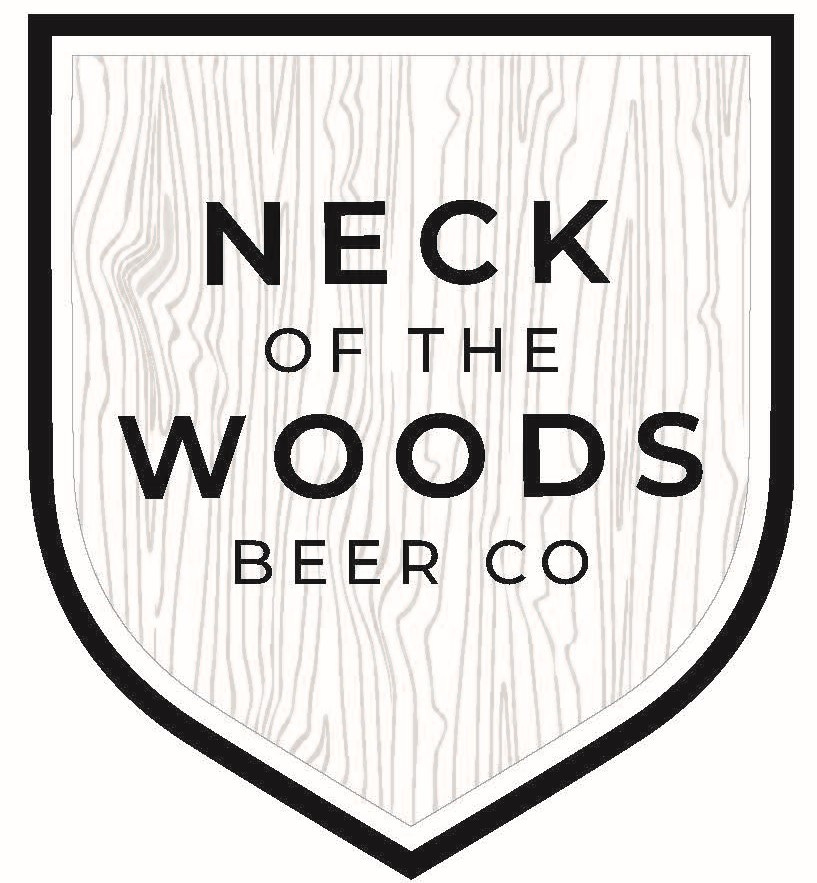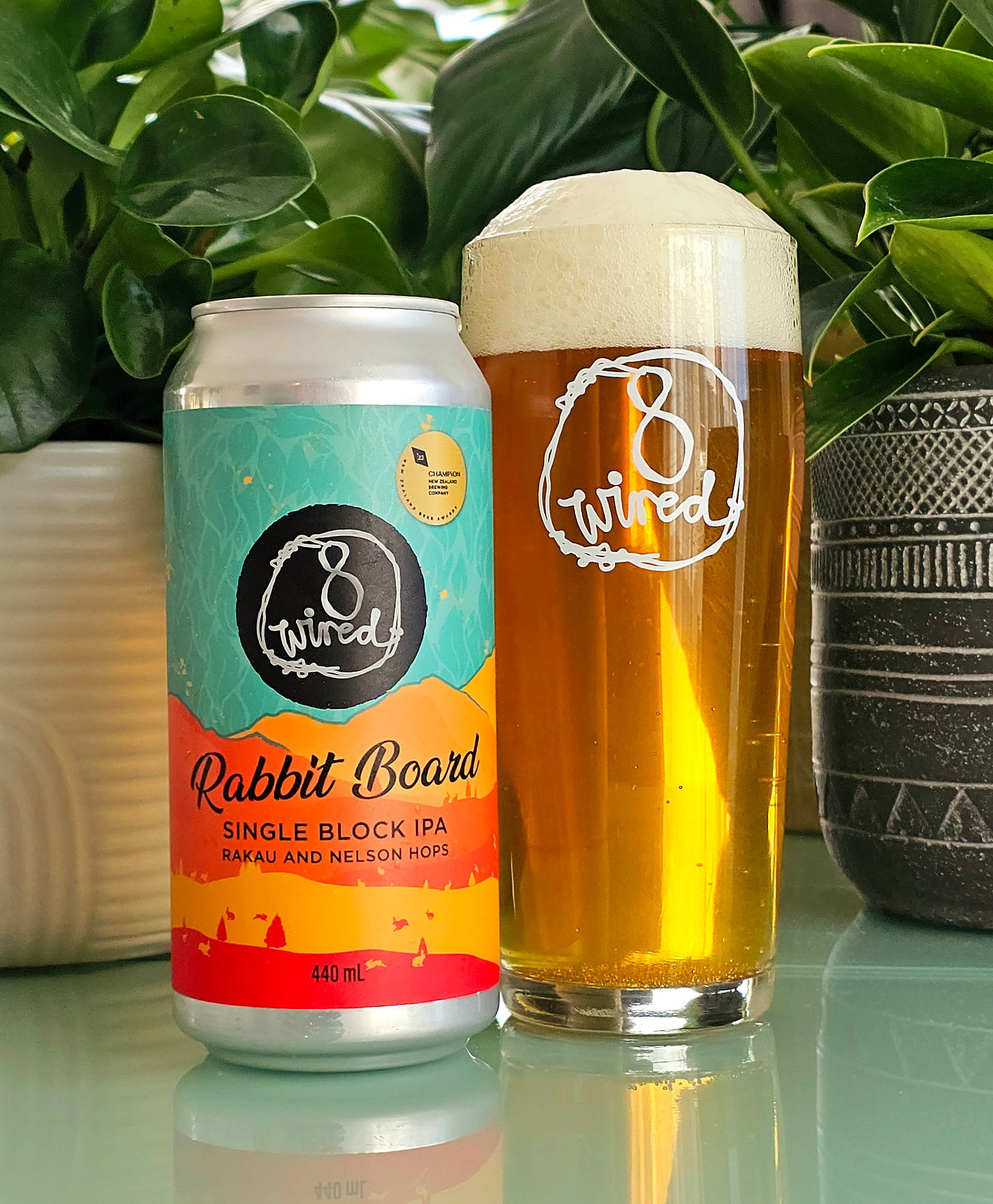Deep Creek founder to open new brewpub in Tauranga
Scott Taylor to open Neck Of The Woods early next year. A hat-tip to Hallertau. Southpaw hit by thieves ahead of brewery move.
Scott Taylor, one of the founders of Deep Creek and the face of the brand, is starting a new brewpub in Tauriko, just outside Tauranga.
Taylor had a 1% stake in Deep Creek, which was liquidated last year in the biggest beer shock of the post-Covid economic crunch.
In the wake of Deep Creek’s liquidation and following the death of his mother, Taylor and his wife Debbie sold their Auckland home and the family moved to Papamoa.
“It was a rough time after my parents passed away and Deep Creek went under, so we sold up in Auckland and moved down here to Papamoa. I used the equity from the sale of the Auckland house to fund this project,” Taylor says.
“Hospo is in my bones, and when Deep Creek failed I had to decide whether I wanted to stay in hospo or do something else — but I just love it so much.”
Taylor’s brother also has a brain injury and requires long-term care, so moving back to the area means he’s able “to put a roof over his head”.
Neck Of The Woods will open early next year in a brand-new wooden building on land owned by Tauriko Sawmill & Timber Supplies.
It’s near the well-known Tauranga Crossing — the intersection of State Highways 29 and 36 — and within the busy Tauriko Business Park and in an area that is set to grow further in coming years, with up to 5000 more houses to be built in the suburb. Mpac, the largest Kiwifruit packhouse in the country, is next door.
Taylor is partnering with Virgile Meiller, who was previously general manager at The Barrel Room in Tauranga.
The Tauriko Sawmill is owned by Rob Moores, a lifelong friend of Taylor’s late father, Lindsay. Moores and his son Andrew built the new premises, which faces west towards the Kaimai Ranges.
A new driveway has just been poured and a garden bar and covered deck are coming ahead of opening in February or March.
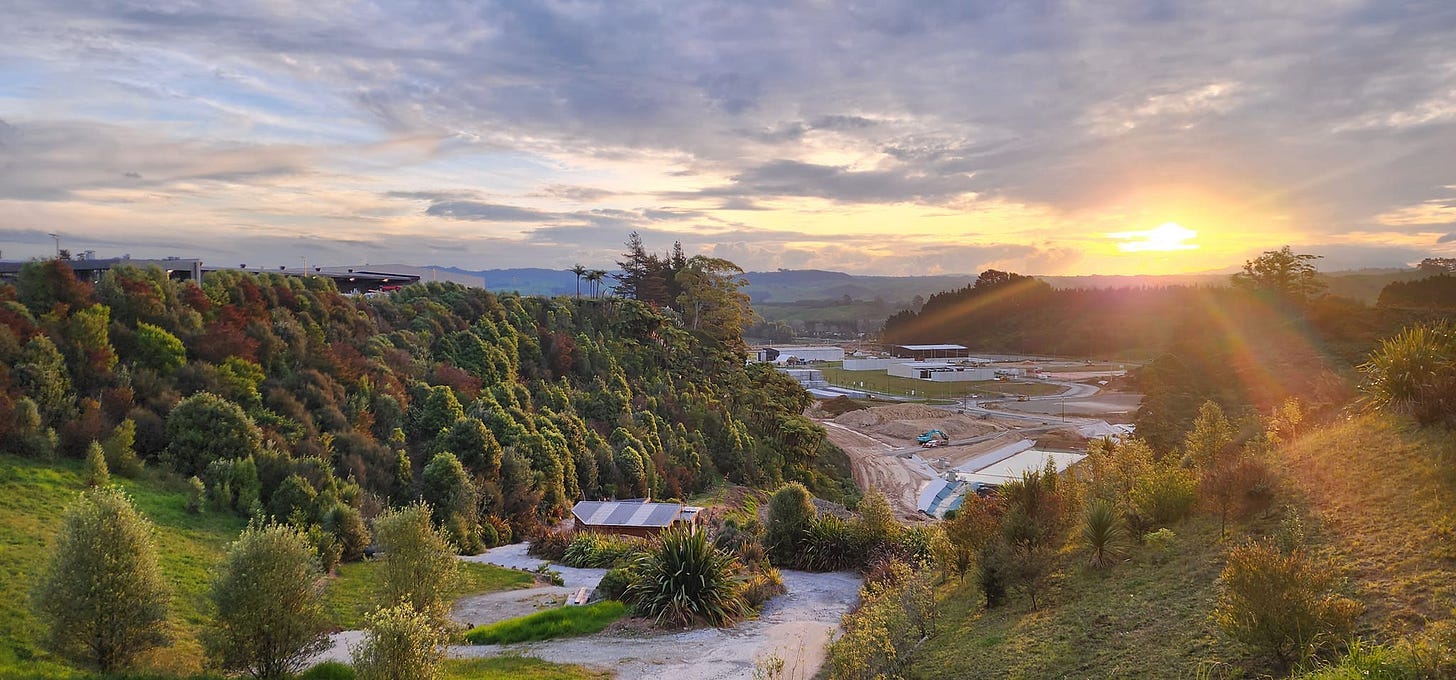
Taylor hopes the positioning of Neck Of The Woods will be a drawcard.
“The beach-side of Tauranga is pretty full with the likes of Mount Brewing and The Island in Papamoa, and you’d include the Lumberjack taproom in Te Puke. Out where we are, there are couple of smaller breweries like Alchemy Street and Fitzpatrick’s. I figured Tauranga could use another brewery.”
Taylor has learned plenty of lessons from his Deep Creek journey, including the value of starting small and being part of a community as Deep Creek originally was when it began as a brewpub in Brown’s Bay on Auckland’s North Shore
“The brewing industry in New Zealand has taken a massive hit and Deep Creek was a major casualty, but I feel the future of the brewing industry sits with brewpubs and building up a local base, and having locals discover you and having a sense of ownership.
“That’s what Deep Creek was when it started up in Brown’s Bay.
“It’s also the model that the likes of Mount Brewing and Shining Peak in New Plymouth have followed — they are perfect examples of building a local base and growing out from that.
“They are both incredibly successful because of the quality of the beer and the quality of the people who run the business — it’s about making good beer and being local.”
He also believes, despite Deep Creek’s crash-and-burn, that craft beer has a solid future.
“I don’t think people are sick of craft beer. Yes, that discretionary spend is down but if you take a hit on margin to get a slightly cheaper pint in people’s hands — that still works.”
He’s also putting an emphasis on food, with a “tuck shop” to serve day-long food on a site that will eventually features a 20m-long covered deck, garden bar and a natural amphitheatre that could be a music venue.
Taylor says Hallertau in Riverhead, north-west of Auckland, “is a massive inspiration for this”.
“I’ve always loved what Steve and Hayley [Plowman] have done. They were one of the first to truly embrace the concept of the big garden bar. And they’ve proved good beer and good food will attract people even if you’re a bit out of the way.”
Taylor has yet to hire a brewer but he has secured a second-hand brew kit from another brewery that is set to transition from on-site brewing to contract brewing. More on that at a future date.
Beer of the Week No 1
That mention of Hallertau is a perfect segue into this week’s top beer.
I was reminiscing this week about the early days of Hallertau — I’m pretty sure their 20th birthday is coming up next year.
Last night, on the occasion of our 21st wedding anniversary, the beer of choice in the restaurant was their IPA, aka Maximus, aka No 7, which was absolutely clean, bright and lovely.
And last week I enjoyed their annual collab with their neighbours at Boric Orchards — a Tangelo Witbier, which is a fantastic spicy, fruity, sharp example of a Witbier.
But then my reminiscing went right back … to the recognition Hallertau were one of my craft gateways through their No 1, aka Luxe, aka Kolsch, which I discovered shortly after landing in west Auckland circa 2006, when it was on offer at the Lopdell House theatre in Titirangi.
I didn’t know craft was a thing back then, it probably wasn’t even a thing — it was still all micro, boutique and local. But I remember that beer with great fondness.
To my surprise, No 1 is now rebranded as a Low Carb Lager, which — to be fair — is an easier sell than Kolsch.
The good news is, while I’ve changed a lot, the beer hasn’t. There’s still a light, fragrant apple ester, lovely bitter-sweet balance, and massive drinkability.
Southpaw sucker-punched by robbers
Christchurch’s Southpaw Brewing are in the process of relocating their brewery from industrial Hornby to seaside New Brighton, but they’ve been rocked by a theft in a process.
I think this is a great move. New Brighton is crying out for a brewpub and the move to that part of the city will pay long-term dividends I reckon. And it feels a good fit for Southpaw.
But it sucks that they’ve been set back by thieves.
Owner-brewer Cameron Burgess told The Press he’d been storing equipment at the new premises ahead of the final move when thieves struck, grabbing cans of beer including their Espresso Milk Stout and Hoppy Saison (you can’t argue with their taste, that Hoppy Saison is delicious). Some brewing equipment was also stolen or vandalised.
Burgess reckoned $5000 to $8000 worth of beer was taken that was meant to cover supply over Christmas. Brewing is on hold while they relocate.
“Hopefully the damaged plant and equipment doesn’t delay the plant installation,” he said, “But the damage hasn’t been fully appraised yet, so [we’re] unsure if we can repair or will need to replace.”
Southpaw are one of the founding tenants in the long-awaited Pierside complex in New Brighton Mall.
Dusty’s Beer of the Week
New tin drop from 8 Wired Brewing, Rabbit Board is named after the good folk who keep the rabbit population at bay. It’s a 6% IPA hopped single block Rakau & Nelson Sauvin out of Garston hops. Hop forward with notes of apricot, mango, melon, gooseberry & floral sit above a chewy malt bill. A big body and mouthfeel round out a smashable IPA ... hoppy Friday! — Dusty
Is the craft beer party over?
A long, long time ago I studied physics at Victoria University but we parted ways somewhere in second year mainly due to the mathematics of the whole business. But I still read physics stuff, mostly quantum physics in the never-ending quest to actually understand the stuff.
Anyway, the website Phys.org was the last place I expected to find an article about beer — I figured they were using it as clickbait to get people to their site!
The article asked the question: “is the craft beer party truly over—and with it, the artisanal movement as a whole?”
And they answered it with a new study from Ivey Business School professor Andreas Schotter, published in the Journal of Business Venturing, which suggests otherwise.
Just as craft beer reached its zenith, the COVID-19 pandemic struck. Sales plunged. Small breweries — the soul of the craft movement — were hit hardest. The once-vibrant spirit of collaboration unraveled as businesses fought to stay afloat.
Driven to understand how disruptions shape craft ventures, Schotter and his US colleagues conducted interviews with brewery stakeholders and analyzed industry data. What they discovered was unexpected: the craft sector isn't going stale. Instead, it's evolving, undergoing a profound transformation that could redefine the very meaning of “craft”.
There’s too much to summarise so you can read the full story here here but I found the research quite relevant to what’s happening here.
Essentially it’s about craft becoming more mainstream, and the changes required to survive in that bigger environment.
“The craft party isn't over, it's just moving to a bigger, more interesting venue,” Schotter said.
Beer of week No 2
Pacific Ale was almost a thing 10 years — does anyone remember Panhead Whitewall? It was brewed along the lines of the almost unstoppably popular Stone & Wood Pacific Ale across the ditch but was marketed here as a “hoppy wheat ale” which didn’t quite work. At that time, it felt like this very Australian style was destined to take off here despite our climate being not quite hot enough for this very summer-inspired style.
There are still a few around — Bach Brewing’s delicious Driftwood is marketed as a Pacific Ale but might be a tad high in the ABV to be truly comparable to the Aussie ones which are sub-5%. Mac’s Rockaway also fits the bill. There may be others but my brain isn’t coming up with any at the moment!
Enter Good George with Left Hand Break Pacific Ale.
This Riwaka-hopped 4.4% wheat ale brings citrus and light floral notes to a very easy-drinking beer that’s got summer written all over it. For me, it hits that narrow overlap between flavour, sessionability, and pricing (It’s sub-$20 on the Good George website for a 330ml 6-pack and could be discounted further for Black Friday).
It tastes great in a clever, non-distracting way and does the most important job, in cricket season, of quenching your thirst.
Euro war brewing
There’s a European war brewing — with English traditionalists angry at the attacks on British beer by Danish giant Carlsberg.
The Danes stand accused of “wiping out” British heritage after the announcement 11 classic beers would be axed by Carlsberg Marston’s Brewing Company (CMBC) — a joint venture that was fully taken over by the Danish giant earlier this year.
Marston’s, which has brewed beer for 186 years, sold its remaining 40pc stake in the venture for £206m. The Competition and Markets Authority (CMA) had previously investigated the merger between the two brewers, but gave the deal the go-ahead.
Marston’s, which has almost 1,400 pubs, is one of several British breweries to have fallen into foreign hands in recent years. Fuller’s sold its brewing business to Asahi in 2019, while Young’s sold its brewing business in 2011.
CMBC has already shut down Cumbria-based Jennings Brewery, sold the Eagle Brewery to Spanish beer maker Damm and announced the closure of Wolverhampton’s Banks’s Brewery in its 150th year.
The Campaign for Real Ale (Camra) warned that the latest cuts would deal a fresh blow to British brewing, consumer choice and industry jobs.
Gillian Hough, vice chairman of Camra, said: “This is another example of a globally owned business wiping out UK brewing heritage.
“I hope that this change will mean space on the bar for licensees to stock guest beers from local independent breweries, but realistically, I suspect this isn’t what CMBC plans.
“This loss of consumer choice is the inevitable outcome of a brewing conglomerate run by accountants and the bottom line. This is a sad and disappointing decision that puts both the history and the future of British brewing in jeopardy.”
CMBC cited falling demand for the beers.
Tim’s Beer of the Week
My latest visit to Three Boys was to hear founder Ralph Bungard talk through some of New Zealand’s brewing milestones with historian Greg Ryan, whose book Continuous Ferment was released this year. I also enjoyed a couple of pints, of course, to maintain focus, and was consequently reminded just what a profoundly good NZIPA the brewery puts on.
With a very clean and laidback malt base, the Tasman trio of Nelson Sauvin, Motueka and Riwaka run absolutely rampant. Fresh, ripe, tropicals and gentle citrus are quickly joined by hugely pungent Savingnon Blanc and gooseberry. The palate is juicy and rapid, moving swiftly into a finish that’s just bitter enough to keep the ripe fruit notes under control.
An NZIPA that does not shy away from the expansive Nelson character, yet still pulls off the light and clean malt base of a truly modern example. I’m very hopeful to see this join the Three Boys core range permanently.
Is it all just beer now?
If there’s a theme running through some of this week’s news, it’s about the place of craft within the wider ecosystem of beer.
And two separate stories I read this week help round out the puzzle and fill in the gaps.
First, Jeff Alworth at the Beervana Blog, argues “that the marriage of convenience between big beer and craft beer had ended in a messy divorce”.
It’s a detailed look at why big breweries in the US bought craft breweries and why, a decade later, they are done with them and won’t go there again. In some ways, it comes back to a line I used to use a lot, and have used again here in the intro para of this segment: ecosystem.
In any ecosystem there are the big and small, the apex predators and the prey. Beer used to be divided into two systems — big/global and small/regional/indie and they didn’t necessarily overlap or compete. But the lines have become blurred and it’s all just “beer” now.
As Jeff notes: “If you want a cheaper beer and don’t mind a mass-market lager interchangeable with all the others on the shelves, you’ll buy a Bud Light (or more likely a Modelo). But if you want a characterful beer that is very much distinguishable from others on the shelf and you’re willing to pay more, you’re going to grab a locally-made IPA or Italian pilsner.”
The sentiment is echoed by Jez Galaun, the managing director of Heineken-owned Brixton Brewery, who came at the issue from a different angle on LinkedIn, but kind of ended up in the same place: that it’s all just beer and who makes it doesn’t matter as long as you get the taste you’re looking for.
He was arguing against some of the language used by SIBA (The Society of Independent Brewers and Associates) in an awareness campaign about independent breweries, notably the line: Independent beer is handmade by real people who truly care about the quality and flavour of the beer they are producing.
“[That] implies that non-independent breweries lack genuine craftsmanship and passion for quality and flavour,” Galaun wrote.
“Our track record of success, transparency, and dedication to brewing excellent beers demonstrates our authenticity. Being acquired reflects our achievements, and we are proud of it.
“I understand that people care deeply about beer; this motivated us to start our brewery 11 years ago. To claim that our hard work is invalid because of our success undermines the campaign and raises questions about who is really misleading whom.
“The real question though is do consumers even care?”
Beer of the Week No 3
We ventured down to New Plymouth last weekend for a bit of a getaway and I paid my first visit to the Shining Peak taproom. What a great experience, and the food was top-notch — the smoked flat-iron steak was amazing.
The beer was also outstanding, as you know. I tried a few different things including the Good Nurse, a superb Burton Ale with lots of fruity-meets-roasty bitter vibes. It was dangerously quaffable in the 500ml handle.
The award-winning Petite Pegasus tasted as good as I remember, one of the best sub-5% hazies on the market.
But the beer of the night was Billy Gumboots, a traditional long-lagered Bock that was mellow, nutty, caramel … the sweet flavours were like Coca-Cola, offset by a lovely bitterness helped by the inimitable Green Bullet.
Superb beer!
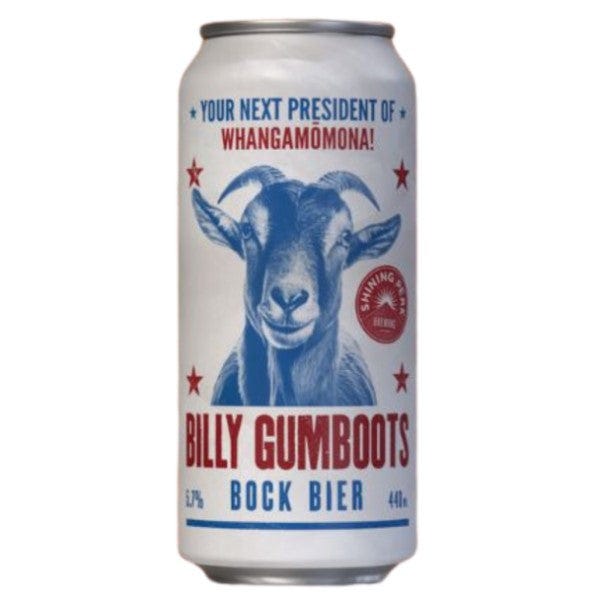
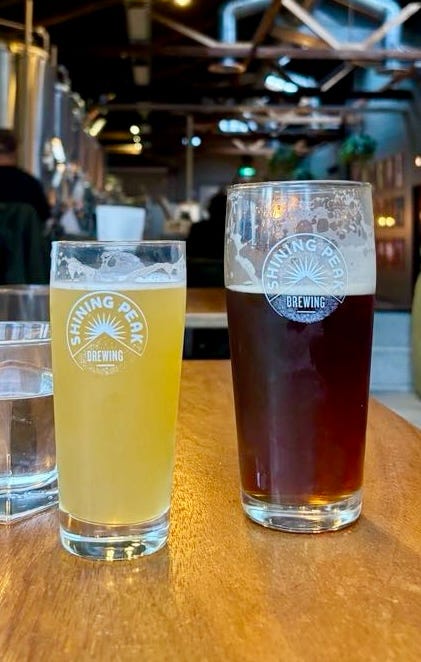
That’s me for another week. Enjoy the weekend. See you in December!
Michael



